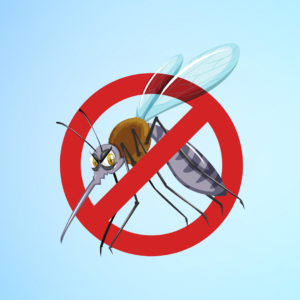The Tiny Terror: Understanding Mosquitoes and Their Impact on Our Lives
 Mosquitoes are more than just a buzzing nuisance; these tiny insects have a significant impact on human health and the environment. As one of the most pervasive and persistent pests, mosquitoes are a topic worth understanding. This blog post delves into the life of mosquitoes, their role in ecosystems, and the challenges they pose to human populations.
Mosquitoes are more than just a buzzing nuisance; these tiny insects have a significant impact on human health and the environment. As one of the most pervasive and persistent pests, mosquitoes are a topic worth understanding. This blog post delves into the life of mosquitoes, their role in ecosystems, and the challenges they pose to human populations.
The Life of a Mosquito
Mosquitoes belong to the family Culicidae, which consists of over 3,500 species. Despite their small size, they play a complex role in the natural world. The life cycle of a mosquito consists of four stages: egg, larva, pupa, and adult. Female mosquitoes lay their eggs in stagnant water, where they hatch into larvae, also known as “wrigglers.” These larvae eventually develop into pupae, and after a brief period, emerge as adult mosquitoes.
Female mosquitoes are the ones responsible for the itchy bites we all dread. They require a blood meal to produce eggs, and it is during this feeding process that they can transmit various diseases. Males, on the other hand, feed primarily on nectar and are harmless to humans.
Mosquitoes and Disease Transmission
Mosquitoes are notorious for their role in spreading diseases. They are vectors for several serious illnesses, including malaria, dengue fever, Zika virus, chikungunya, and West Nile virus. Malaria alone claims hundreds of thousands of lives each year, predominantly in sub-Saharan Africa. The spread of these diseases is closely tied to the mosquito’s ability to thrive in warm, humid environments, making them a significant concern in tropical and subtropical regions.
The impact of mosquito-borne diseases extends beyond health. These illnesses can strain healthcare systems, reduce productivity, and affect economies, particularly in developing countries. Efforts to control mosquito populations and prevent disease transmission are ongoing, but the adaptability of mosquitoes often makes these efforts challenging.
Mosquitoes in the Ecosystem
While mosquitoes are often viewed as pests, they do play a role in ecosystems. Their larvae serve as food for various aquatic creatures, including fish and other insects. Adult mosquitoes are also a food source for birds, bats, and other wildlife. In some ecosystems, mosquitoes contribute to pollination, as they feed on nectar.
However, the negative impacts of mosquitoes on human health often overshadow their ecological roles. Balancing mosquito control with environmental conservation is a delicate task, requiring careful consideration of both human needs and ecological balance.
The Challenges of Mosquito Control
Controlling mosquito populations is a global challenge. Traditional methods include the use of insecticides, which can be effective but may also harm other wildlife and contribute to the development of insecticide-resistant mosquitoes. Innovations such as genetically modified mosquitoes, which are designed to reduce populations by limiting reproduction, are being explored as potential solutions.
Public health initiatives, such as distributing insecticide-treated bed nets and promoting the use of repellents, play a crucial role in reducing the incidence of mosquito-borne diseases. Education on preventing mosquito breeding, such as eliminating standing water around homes, is also essential in mitigating the risk of mosquito-borne illnesses.
Conclusion
Mosquitoes may be small, but their impact on our lives is immense. Understanding their life cycle, ecological role, and the diseases they transmit is vital in addressing the challenges they pose. While controlling mosquito populations is complex, ongoing research and public health efforts offer hope for reducing the burden of mosquito-borne diseases on global health and economies.
As we continue to seek solutions, it is clear that mosquitoes will remain a subject of fascination and concern, reminding us of the delicate balance between humans and the natural world.
